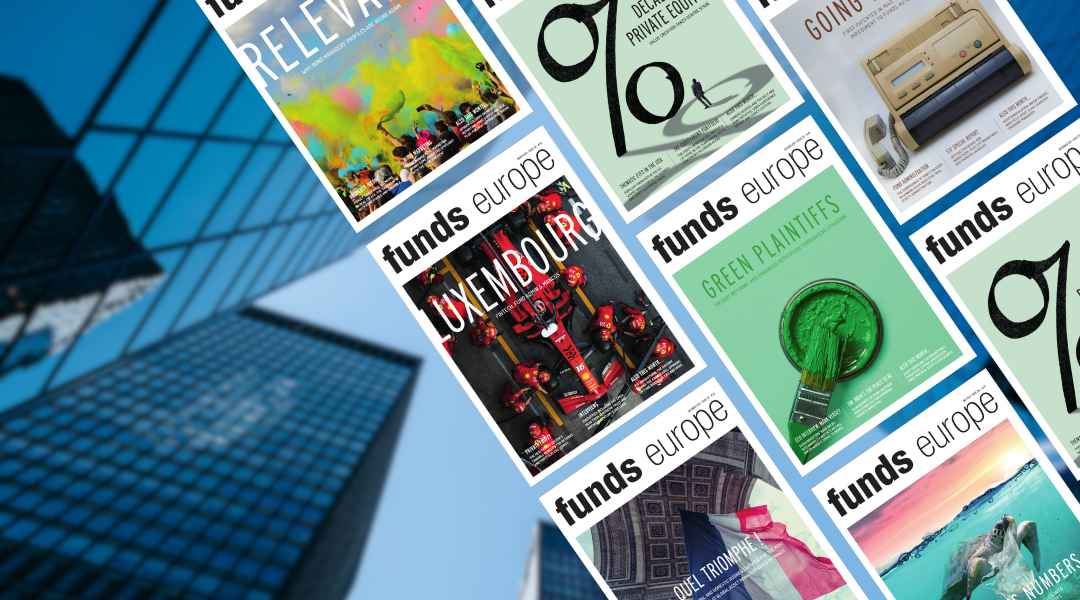 Asian markets along with their global counterparts rallied when Joe Biden clinched the US Presidential election, but selectivity is still advised across the region, writes Lynn Strongin Dodds.
The consensus was a return to a more conventional foreign policy – although industry experts warn that does not signal going back to the Obama administration’s pivot towards China. As Xiaoyu Liu, portfolio manager for Aviva Investors Asian Equity Income Fund, puts it: “I don’t expect significant changes in the relationship with China, although policies from a Biden presidency are expected to contain less bluster and volatility.”
She believes that Biden’s government will be more likely to cooperate with China on issues such as climate change and global health. “However, it is difficult to see change in substance, with competitive issues over technology and national security remaining,” she adds.
Nicole Goldberger, managing director and head of growth portfolios in UBS Asset Management’s investment solutions unit, concurs. She believes that when it comes to US-China relations, “Biden may be more predictable, but he will also be tough and confrontational. The focus will be more on multilateralism and working with allies versus bilateral trade and tariffs.”
During the Obama administration when Biden was vice president, the strategy was not only to strengthen bilateral security alliances but also deepen working relationships with emerging powers and to shift the attention more to China and away from the Middle East. This built upon George W Bush’s framework, which concluded free-trade agreements with Australia, South Korea and Singapore and began talks on what became the Trans-Pacific Partnership (TPP). By contrast, Donald Trump imposed strict trade tariffs on China, tightened restrictions on its leading technology firms such as Huawei, threatened to sever financial links, closed China’s consulate in Houston and shut down the TPP.
Biden is unlikely to completely loosen the reins, but instead aims to employ existing multinational forums to both hold China to account and curb its growing global influence. There is also talk of reviving the TPP in light of the recent signing of the Regional Comprehensive Economic Partnership (RCEP), which locks out the US, according to Kiran Nandra-Koehrer, senior product specialist at Pictet Asset Management.
RCEP is the newly inked free-trade pact including the ten members of Asean – Brunei, Cambodia, Indonesia, Laos, Malaysia, Myanmar, the Philippines, Singapore, Thailand and Vietnam – as well as China, Australia, Japan, New Zealand and South Korea. It has been in the works since 2012 and would be the world’s largest trade agreement by population and GDP.
Emerging markets impact
Asian markets along with their global counterparts rallied when Joe Biden clinched the US Presidential election, but selectivity is still advised across the region, writes Lynn Strongin Dodds.
The consensus was a return to a more conventional foreign policy – although industry experts warn that does not signal going back to the Obama administration’s pivot towards China. As Xiaoyu Liu, portfolio manager for Aviva Investors Asian Equity Income Fund, puts it: “I don’t expect significant changes in the relationship with China, although policies from a Biden presidency are expected to contain less bluster and volatility.”
She believes that Biden’s government will be more likely to cooperate with China on issues such as climate change and global health. “However, it is difficult to see change in substance, with competitive issues over technology and national security remaining,” she adds.
Nicole Goldberger, managing director and head of growth portfolios in UBS Asset Management’s investment solutions unit, concurs. She believes that when it comes to US-China relations, “Biden may be more predictable, but he will also be tough and confrontational. The focus will be more on multilateralism and working with allies versus bilateral trade and tariffs.”
During the Obama administration when Biden was vice president, the strategy was not only to strengthen bilateral security alliances but also deepen working relationships with emerging powers and to shift the attention more to China and away from the Middle East. This built upon George W Bush’s framework, which concluded free-trade agreements with Australia, South Korea and Singapore and began talks on what became the Trans-Pacific Partnership (TPP). By contrast, Donald Trump imposed strict trade tariffs on China, tightened restrictions on its leading technology firms such as Huawei, threatened to sever financial links, closed China’s consulate in Houston and shut down the TPP.
Biden is unlikely to completely loosen the reins, but instead aims to employ existing multinational forums to both hold China to account and curb its growing global influence. There is also talk of reviving the TPP in light of the recent signing of the Regional Comprehensive Economic Partnership (RCEP), which locks out the US, according to Kiran Nandra-Koehrer, senior product specialist at Pictet Asset Management.
RCEP is the newly inked free-trade pact including the ten members of Asean – Brunei, Cambodia, Indonesia, Laos, Malaysia, Myanmar, the Philippines, Singapore, Thailand and Vietnam – as well as China, Australia, Japan, New Zealand and South Korea. It has been in the works since 2012 and would be the world’s largest trade agreement by population and GDP.
Emerging markets impactFrom an investment perspective, a more accommodating US foreign policy will certainly reduce headline shocks and inject more stability into markets. However, US economic and monetary policy will also impact the region as well as other emerging markets especially if the US Federal Reserve (Fed) continues, as expected, to pump money into the system. According to Jan Dehn, global head of research and Gustavo Medeiros, deputy head of research at Ashmore Group, the prospect of yet more fiscal stimulus and monetary policies geared towards funding the fiscal deficit are a recipe for lower trend productivity growth and capital outflows. This bodes well for emerging market equities in general due to a strong relationship between emerging market equity outperformance relative to the S&P 500 and the broad dollar. Kerry Craig, global market strategist at JP Morgan Asset Management (JPMAM) adds that the implications of a widening US deficit, possibly a more predictable US foreign policy and lower bond yields, is a weaker US dollar – all of which are positive for emerging markets and, notably, Asian assets. From a sector perspective, Liu echoes these sentiments but also believes that Asian economies will be affected by Biden’s blueprint of increased infrastructure spending, greater use of alternative energy and green technologies, upgrading public transportation, power and communication systems and a focus on public health. “If all of these trends are realised, we are expecting some rotation from the technology and healthcare sectors into the cyclical sectors, such as financials, materials and real estate,” she adds. “We will see more divergent performance in the energy sectors, with continuously better performance of renewable energy producers over the traditional fossil fuel producers.” Pandemic recovery
Asia, which comprises roughly 70% of the MSCI Emerging Markets Index, is also on the investment radar due to its collective approach to the coronavirus when compared to its Western peers. This is particularly true of China, which accounts for the bulk (roughly 43%) of the index. Although significantly impacted earlier in the year, the country has experienced something like the V-shaped recovery that Western economies continue to hope for. Growth is on track at nearly 2% this year, the most of any major economy, while the world is expected to contract by 4.4% and the US by 4.3%, according to the International Monetary Fund. “China is in good shape,” says Maarten-Jan Bakkum, senior emerging markets strategist at NN Investment Partners. “It is much less vulnerable to global trade than it was in 2016 and it is not only growing, but it has improved the quality of the growth over the last few years. “The government has done what it set out to do in terms of strengthening the financial system and stability, minimising leverage in the system as well as focusing on innovation, the environment and productivity,” he adds. “It has also enhanced urban infrastructure and improved public transportation and health. If you take all these factors together, it is very positive for the economy and its markets.” Wing Chan, director of manager research practices, EMEA & Asia at Morningstar Investment Management Asia, also points to Chinese fixed income markets as a structurally appealing asset class that offers reasonable value relative to their Western counterparts. “Despite a selloff in March, Asian bond and credit strategies have come back into favour,” he adds. “With global rates at record lows and likely to remain so for the foreseeable future, the Chinese onshore bond market offers diversification benefits and, importantly, a relatively ‘normal’ yield curve with a decent yield. With the ten-year bond yield at 3%, index inclusion and yield-seeking institutional investors can lead to continual and structural inflows in the world’s second-largest bond market.” Views are more mixed on South Korea. Some analysts believe that producers of electric-car batteries, solar panels, wind-power plants and hydrogen fuel-cell vehicles are well placed to benefit from Biden’s climate plan. It has also won plaudits for containing the virus, although cases have spiked more recently. One of the greater concerns, though, is the stranglehold that family-controlled conglomerates continue to have on the stock market, which has dampened growth and led to discounts in valuations. Although improving, the country is still faced with deep-seated corporate governance issues, which is why it prefers quality individual names and there have been several cases of corruption over the years. India
Opinions are also divided on India’s investment prospects. While the stability offered by a Biden administration will help equities, particularly those in the IT sector, prime minister Narendra Modi’s initiatives are also expected to spur economic growth. In the autumn, the government announced a fresh round of stimulus totalling about $20 billion to help pull the economy out of its historic contraction. This followed on from a production-linked package of around $27 billion over five years for manufacturers in ten sectors, including automobiles and auto parts, pharmaceuticals, textiles and food products. This is on top of an additional $266 billion stimulus package to help the country’s stalled economy recover from the lockdown imposed to slow the spread of coronavirus. It was to boost consumer spending and manufacturing, but a large chunk was actually loans provided by banks, many of them without collateral. “The situation has become much more manageable and the recent stimulus announcement should offset the Covid shock, particularly for exporters” says Ashmore Group’s Medeiros. “This will minimise the risks to business and should generate greater growth. I can also see value in supply chains as low-to-medium value-add manufacturing companies position themselves as alternatives to Chinese companies. © 2020 funds global asia

 At times like these, HSBC Asset Management easily pivots towards emerging markets.
At times like these, HSBC Asset Management easily pivots towards emerging markets. A comprehensive, cost-effective, and transparent currency overlay hedging solution is crucial to mitigate FX exposure risks in the complex landscapes of Japan and China's FX markets, explains Hans Jacob Feder, PhD, global head of FX services at MUFG Investor Services.
A comprehensive, cost-effective, and transparent currency overlay hedging solution is crucial to mitigate FX exposure risks in the complex landscapes of Japan and China's FX markets, explains Hans Jacob Feder, PhD, global head of FX services at MUFG Investor Services. The world is transitioning from an era of commodity abundance to one of undersupply. Ben Ross and Tyler Rosenlicht of Cohen & Steers believe this shift may result in significant returns for commodities and resource producers over the next decade.
The world is transitioning from an era of commodity abundance to one of undersupply. Ben Ross and Tyler Rosenlicht of Cohen & Steers believe this shift may result in significant returns for commodities and resource producers over the next decade. Ross Dilkes, fixed income portfolio manager at Wellington Management, examines the opportunities and risks for bond investors presented by the region’s decarbonisation agenda.
Ross Dilkes, fixed income portfolio manager at Wellington Management, examines the opportunities and risks for bond investors presented by the region’s decarbonisation agenda. Shareholders in Japan no longer accept below-par corporate governance standards. Changes are taking place, but there are still areas for improvement, says Tetsuro Takase at SuMi Trust.
Shareholders in Japan no longer accept below-par corporate governance standards. Changes are taking place, but there are still areas for improvement, says Tetsuro Takase at SuMi Trust. Robert St Clair, head of investment strategy at Fullerton Fund Management, explores the reasons investors should be paying attention to the rising demand for healthcare in China.
Robert St Clair, head of investment strategy at Fullerton Fund Management, explores the reasons investors should be paying attention to the rising demand for healthcare in China.


